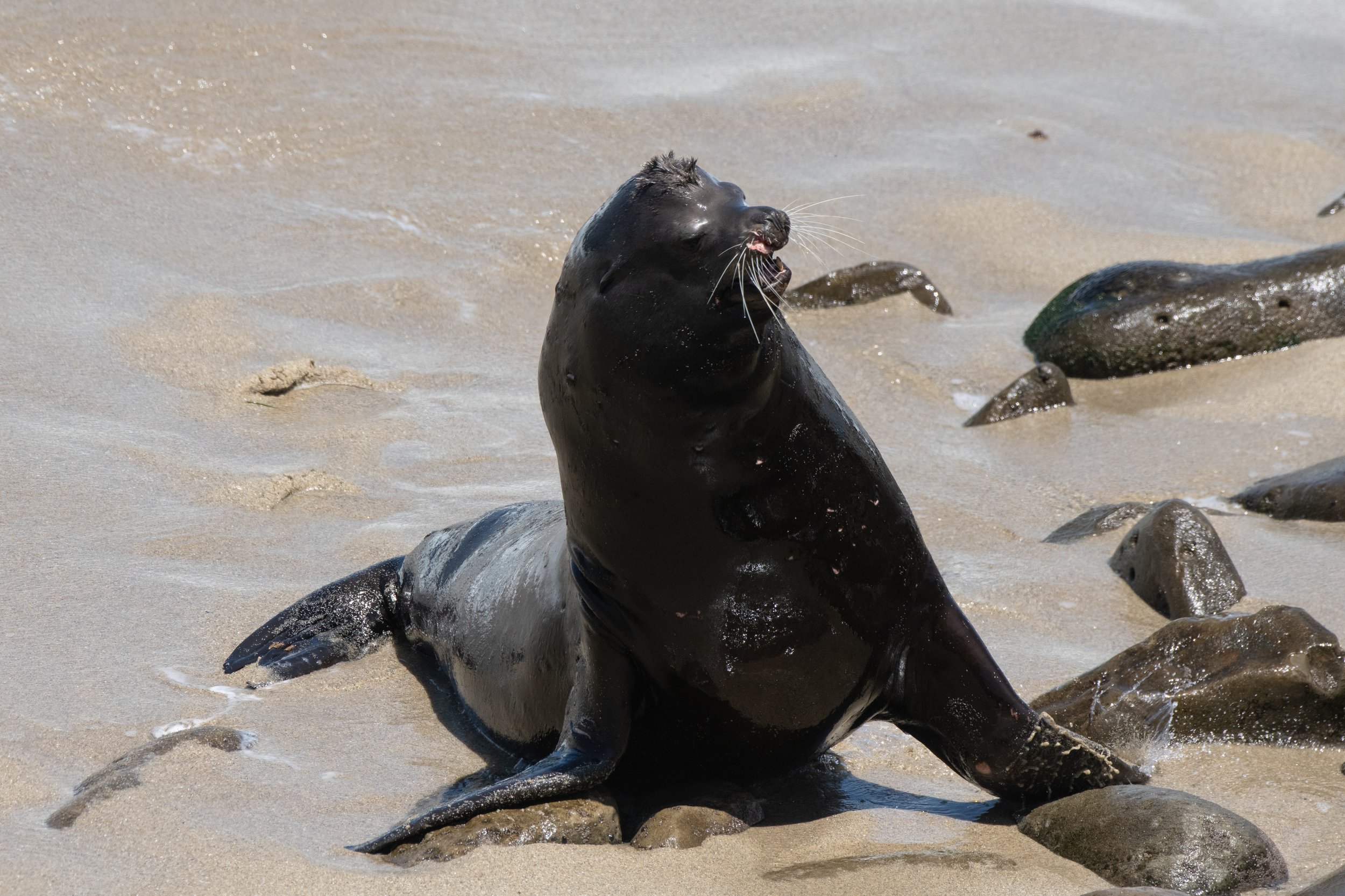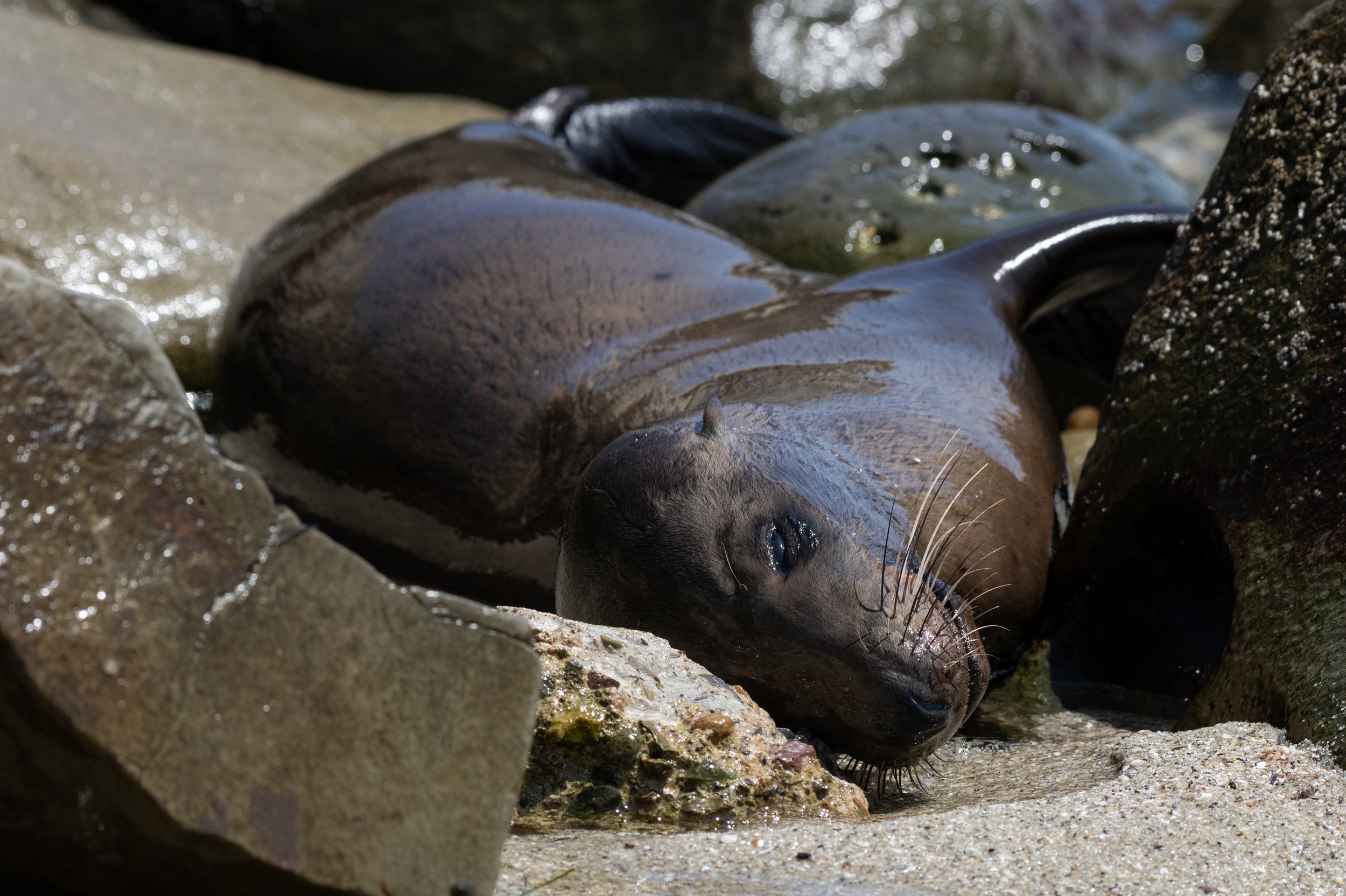
Let’s learn all about California Sea Lions
Where do California Sea Lions Live?
Like their name suggests, California sea lions live in California, however that is not the only place you will find them. They live in the shallow waters throughout the eastern North Pacific Ocean. They prefer sandy beaches or rocky coves for breeding and haul-out sites. Along the West Coast, they also haul out on marina docks as well as jetties. California sea lions range from southeast Alaska to the Pacific coast of central Mexico.
How do California Sea Lions fit into the ecosystem?
California sea lions are a keystone species. They are a top predator that help maintain balance in the ecosystem by regulating the populations of other marine species.
Predators
California sea lions eat smaller marine species like fish, squid, octopus, and crustaceans. This helps keep the populations of these other species in check.
Food source
California sea lions are also prey for large animals like sharks and killer whales.
Ecosystem indicators
The health of California sea lions can indicate the health of the ocean, including toxins from algal blooms.
Appearance
Ear Flaps
Sea Lions have outer ear flaps, which distinguishes them from Seals
Foreflippers
A California sea lion's foreflippers are large and winglike, allowing them to walk on land.
California sea lions use their foreflippers in an up-and-down, wing-like motion to propel themselves through the water.
Hind Flippers
Like land mammals, sea lions have five digits in the hind limbs.
On land, a sea lion can rotate its hind flippers underneath the pelvic girdle, enabling it to support its weight and walk on all fours.
In the water, a sea lion extends its hind flippers and uses them to help steer.
Tail
A California sea lion has a small, flattened tail between the hind flippers.
Reproduction
Males California Sea Lions are polygamous, meaning that one male will mate with multiple females. He will establish breeding territories that may include up to 14 females. The males will defend their territories with aggressive physical displays and vocalization.
Sea lions reach sexual maturity at 4 to 5 years old, but do not begin holding territories until about 9 to 12 years old.
Breeding season lasts from late June to early August; most pups are born from May through June, and three to four weeks after giving birth, females are ready to mate again.
Pupping
Most California sea Lion pups are born between May and June.
Moms will separate their nursing and feeding activities. She will nurses her pup for 1 to 2 days, then leaves the pup ashore while she travels to feeding areas at sea. While she is away the pup is often left near other sea lion pups.
The mother will spend between 2 to 5 days feeding, then she will return to shore to nurse. During the mother's absence, the pup doesn’t eat. Females continue a pattern of going to sea for several days and nursing ashore for several days until they wean their pups. This takes almost a year.
Threats
Entanglement
One of the main threats to California sea lions is getting caught in fishing gear. They can become entangled in many different gear types, including traps, pots, or gillnets. Once entangled, they may drag and swim with attached gear for long distances, or if it is wrapped around their necks or limbs could result in cuts, even amputation. They can become fatigued, have compromised feeding ability, or even severe injury, which may lead to reduced reproductive success and death.
Biotoxins from Harmful Algal Blooms
Under the right conditions, algae can grow out of control. Some algae “blooms” produce toxins that can kill fish, mammals, and birds, and may sicken or even kill humans in extreme cases. California sea lions are top predators, which means these toxins can build up in their bodies, possibly leading to seizures or death from domoic acid poisoning.
Human-Caused Injuries and Mortalities
California sea lions are regularly viewed when near the west coast shore, which puts them at risk of human-related injuries and death. Feeding or trying to feed them is harmful and illegal, because it changes their natural behaviors and makes them less wary of people and vessels. They learn to associate humans with an easy meal and change their natural hunting practices—for example, they take bait catch directly off fishing gear.
They may also be disturbed or harassed by the presence of humans and watercraft.
What do you do if you see an marine mammal in distress?
If you have seen an animal in distress or in need of help, please contact the Sea World Rescue team.
Phone: 1-800-541- SEAL (7325)
Email: SWC.Rescue@seaworld.com
Helpful information to give the Rescue Team:
Date animal was last seen
Time animal was last seen
Location (name of beach, address, landmark etc.)
Size of the animal compared to a dog breed
Is the animal thin? Can you see its ribs, hips or spine?
Is the animal entangled in fishing gear?














